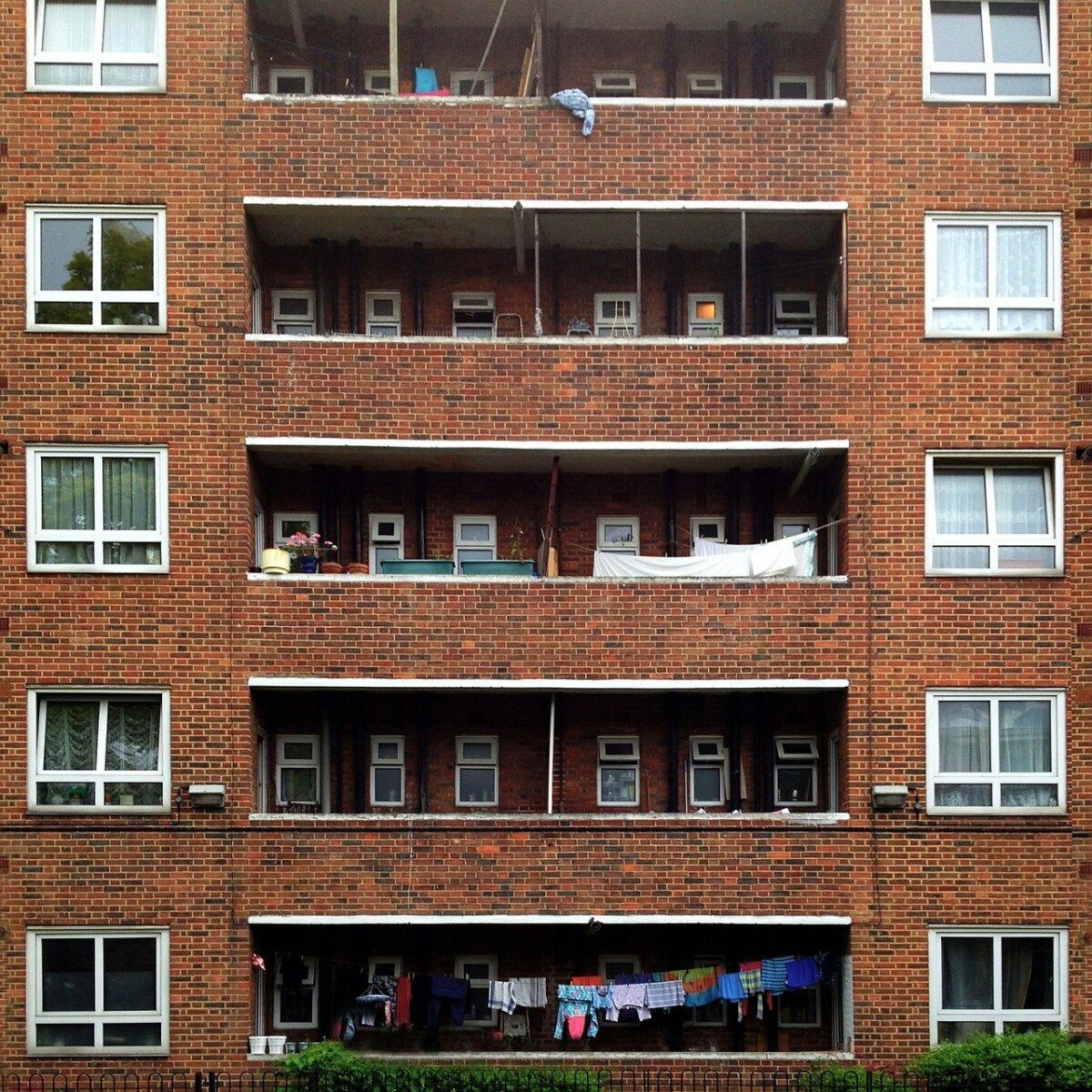The ‘Final Policy Documents’ from Labour’s National Policy Forum for Labour Conference include the core housing policies from which Labour will draw its Manifesto for next year’s general election. It is therefore probably the most important statement since the 2019 Manifesto and the Housing Green Paper ‘Housing for the many’ produced by John Healey in 2018.
It is right that our national housing policy should be comprehensive, dealing with all tenures and tackling issues that affect people across the range of incomes and stages of life. So, I welcome the fact that the document looks across the housing landscape. However, I also remain convinced that the big-ticket item in housing is how to provide many more homes for social rent, and the document is not impressive on that front.
The document addresses access to home ownership and proposes a mortgage deposit guarantee scheme for first-time buyers, a good proposal that is long overdue after years of inflationary and hugely expensive Tory demand subsidies. There are good proposals to reform stamp duty and to back schemes like ‘first dibs for local people’ on new developments (first pioneered by Islington).
I also fully support the emphasis given to reforming the feudal leasehold tenure – about which Dermot McKibbin has written persuasively for Red Brick. The document repeats the target of 70% home ownership, with no timescale, but not the previous commitment to restore social housing as the second biggest tenure. The latter was a statement of intended direction, and its disappearance is a big concern.
The proposed reforms to planning, flexibility around the green belt, scrapping the infrastructure levy, and the ‘unleashing’ of ‘patient capital’ into housebuilding, and higher disability standards, are all outlined, although the devil will be in the detail of each of these and the word ‘reform’ is used too often without saying what and how. Planning needs to stop being so reactive and developer-led so I hope it is true that we will ‘pioneer new models of strategic development’ – but we need meat on the bones.
I like the proposed reform to compulsory purchase orders and there is a hint of awareness of the underlying problems caused by the land market and developer profits, but overall the package of land-related reforms seems weaker than the 2015/2017/2019 Manifestoes. As there is little discussion of the public investment needed to purchase land and build infrastructure, it is not clear how the package will transform the planning process in practice to secure the claimed major uplift in housebuilding. In an era of Metro Mayors and at a time when councils are itching to build themselves, I am not convinced by the idea of new development corporations. No-one wants to wait for new administrative structures to be established.
Following the Tories’ huge cuts to social housing grant, planning gain (the mechanism of s.106 agreements) has produced half of all affordable housing. More could be achieved but maximising affordable supply – especially achieving social rent rather than sham affordable tenures – through planning rather than accepting what is offered might also require additional subsidy. One key change not addressed is to end the abuse of the specious ‘viability test’ through which developers pay too much for land and understate their likely profit to escape their responsibilities to the community by arguing that affordable homes are not viable in the resulting development.
I like the promise raised by the Warm Homes Plan – which will ‘upgrade all the homes that need it’. It’s a critical issue on the path to net zero but, as elsewhere in the document, additional spending is implied without being it being clear where the funding will come from. Homeowners and landlords are unlikely to put up the money without a lot of central government help, and it would take up the bulk of the green investment budget to upgrade all homes. There is a commitment to ‘improve the quality and safety of existing social homes’ but we need clearer guarantees in the post-Grenfell era and following the spike in damp/mould problems in the stock.
Any comprehensive strategy must address the private rented sector. Here the document has good ambitions and quite strong proposals – a Renters Charter, ending no fault evictions, a binding decent homes standard and action against poor landlords, banning discrimination against those on benefits and a national landlord register. My first worry is that there is no assessment of what will happen to the market if all these changes are made: we need to understand what the outcome might be and to plan the further interventions that might be needed. Secondly, all these changes, excellent in themselves, require local authority intervention and enforcement, and on a large scale. It will not happen without the resources – in the form of tenancy relations officers and environmental health officers especially – to implement it, and there is no mention of resources. And thirdly, nothing is said about rent levels or about the iniquitous impact of the Local Housing Allowance and total benefit cap levels: none of the proposals will meet the document’s claim that it will make private renting more affordable.
So, what about the delivery of homes directly to people in housing need, the 100,000+ households in temporary accommodation and the millions on waiting lists or stuck in the misery of the private rented sector who need a secure genuinely affordable home? Except for those who retain a quaint belief in trickle down – ie that the poor will eventually benefit from building market homes – most people understand that only social rent meets these needs. Yet this is the tenure that is addressed least in the document – and this is its greatest weakness.
It starts ok: ‘Labour will also put genuinely affordable housing, and in particular social housing, at the heart of our plan to increase housing supply.’
But what are the specifics? Let us remember that we were committed to gearing up to building 150,000 additional social rent homes a year, including 100,000 new council homes. The commonly accepted minimum requirement is for 90,000 social rent homes a year. Gearing up to any of these figures would be a challenge over a Parliament and very substantial increases in grant and local authority/housing association prudential borrowing would be required. We know that councils have been itching to build many more homes, it is only central government and funding that has held them back.
Making the case for housing investment is a constructive challenge to Labour’s economic as well as housing policy. There have been many studies over the years which consistently demonstrate the positive economic impact of housing investment, including by the SHOUT campaign, all of the housing organisations, and most economic researchers. New social rented housing should never be considered as simply a cost, it also generates an income stream for ever, reduces the cost of benefits, and creates real productive growth.
Regrettably, the document has no targets for affordable or social rented housing. Its key proposal is that Labour will ‘Reprioritise government grant by reforming the Affordable Homes Programme’. The current AHP runs from 2021-2026 and by late 2024 it will be very largely committed. Even then, extra subsidy (grant) would be needed to shift the very final stages of the programme from, for example, ‘affordable rent’ to ‘social rent’ homes – but there is no promise of the extra spending needed to go with the idea.
The ‘reprioritisation’ commitment would have more credibility if it targeted the totality of housing expenditure programmes rather than just the AHP, because some remaining housing demand subsidies could be repurposed.
And what about the years beyond 2026 – the last 3 years of a Labour Government? On current Tory spending plans, capital spending on housing falls off another cliff at that point. With no new AHP announced for 2026 onwards, the UK Housing Review reports that predicted spend on affordable homes will fall from £2233m in 2025/26 to £529m in 2026/27. If Labour sticks to Tory plans there will few affordable homes of any kind. To avoid huge further cuts and to maintain a programme – even at the current inadequate size – Labour must commit to additional spending on housing over and above current Tory plans.
Although reforms to restrict the right to buy are proposed, the policy will continue in some form. Adding in demolitions, losses will continue but at a reduced level. There is a hoped-for increase in social rent from planning but an inevitable reduction in output of new homes from the AHP after 2026. On balance it seems unlikely that the document’s proposals will lead to a net increase in the social housing stock until well into the Labour government, and possibly not at all. This is unconscionable.
Even if we provide the additional spending needed for a new AHP the homes will take some years to produce. We face a housing emergency where we are currently unable to meet the need for temporary accommodation let alone the increasingly urgent need for permanent homes. With 130,000 children living in temporary accommodation, we know the costs of bad housing and homelessness are huge in health, education, well-being, and life chances. The only effective short-term response to the housing emergency will be a major programme of acquisitions, bringing homes into the social rented stock for early use.
One final gripe. The document has only a few words on homelessness – we will have ‘a workable strategy’ which will ‘transform lives’. But it appears to be only about one aspect of homelessness – rough sleeping – and is platitudinous. It is miles away from what is needed if a new Labour government is genuinely to tackle homelessness.
The NPF document’s first words in the housing section – ‘Housing is a human right’ – should be at the core of Labour’s policy making, but there is no commitment to put the human right into law. As they stand, the policies set out will not take us much nearer to achieving that aim.
There are some good ideas and proposals, but the document is seriously deficient in failing to identify serious targets, means of delivery and, above all, resources. It is particularly weak in failing to adopt a target for additional social rented homes or even a sense of direction or some hope. There is a serious risk that, by the end of Labour’s first term, trends that have become entrenched under the Tories – rising homelessness, increasing housing need, and growing unaffordability – will not have been reversed.
Housing investment contributes positively to all Labour’s Five Missions. It secures growth; it makes a major contribution to achieving net zero; it promotes good health and well-being; it builds safe communities; and it breaks down barriers to opportunity. Housing should be Labour’s Sixth Mission.
Steve Hilditch was a founder member of LHG when it formed 42 years ago. He worked as a housing professional and consultant and advised the last Labour Government, various Select Committees and many Labour Councils on housing matters. He recently carried out a detailed housing review for the new Labour Westminster Council. He edited Red Brick blog for 10 years, publishing a compendium book of 100 posts in 2020.









